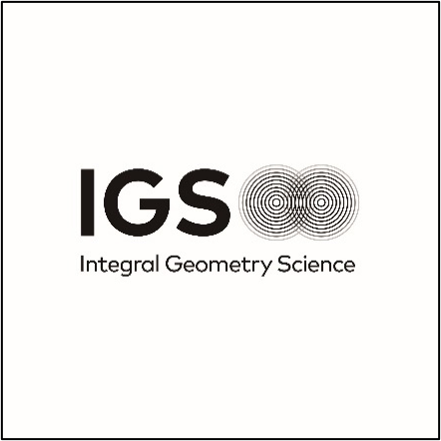Integral Geometry Science, Inc.

As of February 2024
| City | Year of Establishment | Founder |
|---|---|---|
| Kobe, Hyogo | 2012 | Kenjiro Kimura |
| Partner VC | Latest round of Fundraising | Valuation |
|---|---|---|
| SBI Investment | Series C | JPY 34,800 million |
- Contact Information : 078-335-6110
- Website :
 Integral Geometry Science, Inc.
Integral Geometry Science, Inc.
Program name
Deep-Tech Startups Support Program
Research theme
Research for mass-production of in-line battery inspection equipment of current density distribution
Business Plan
In recent years, there has been an urgent need to achieve carbon neutrality, and the development of energy storage sites with high energy density has become essential for the effective use of natural energy. Lithium-ion batteries are superior to lead-acid and nickel-metal hydride batteries in both energy density and output density, and demand for these batteries is expected to continue growing. On the other hand, the number of accidents involving battery ignition has been increasing every year, and there have been numerous reports in the media in recent years of product recalls and the like that have been attributed to lithium-ion batteries.With the mission of realizing storage batteries with high energy density for carbon neutrality, we have been developing an in-line inspection system that can inspect batteries from a new perspective of current density distribution, with the vision of establishing a new battery inspection method that guarantees battery quality and eliminates fire accidents caused by the few defective Li-ion batteries that slip through the current inspection system and appear on the market, and to spread this method as an inspection standard throughout the world. Currently, a test method known as an aging test is widely used in battery outgoing inspection systems. However, the aging test is difficult in principle to screen out potential defective products that have a large local current leakage, because the amount of voltage change is the same in the case of uniformly small current leakage and in the case of locally large current leakage. Unlike the semiconductor manufacturing process, the battery manufacturing process, such as mixing battery active material powder, inevitably results in spatial irregularities, and cells with localized leakage will deteriorate and fail with subsequent charging, discharging, and battery use. Cells with such latent defects, which cannot be screened out by aging tests, are placed on the market, leading to the accident described above. Our storage battery inspection system senses the magnetic field generated by the current inside the battery with ultra-high sensitivity, analytically visualizes the current inside the battery from the obtained magnetic field distribution, and evaluates the localization of the current density inside the battery.The IGS research group is the only group in the world to have successfully developed an analytical method that uses analytical solutions to the fundamental equations for current and magnetic fields, which are the core technologies of inspection systems.IGS has been conducting research and development as a pre-production product, and has succeeded in detecting current irregularities even in battery cells that are determined to be normal in aging tests.By switching from the existing aging test to the IGS inspection system for pre-shipment inspection, quality control with higher accuracy will be realized.
Research Outline
By achieving the development items listed below, we aim to achieve the commercialization and diffusion of a new in-line battery inspection system.
〔1〕Design and development of mass-production type in-line inspection system
- a)
- Production of mass-production type in-line inspection system
- b)
- In-house production of AD converters
- c)
- Optimization of hardware and other measurement mechanism parts for automatic measurement system
〔2〕Establishment of experimental facilities with explosion-proof equipment
- d)
- Introduction of robots and algorithm development
- e)
- Establishment of communication and server storage system
- f)
- Design of safety mechanism such as heat generation monitor
- g)
- Explosion-proof design to withstand explosion of 50 Ah class cells
〔3〕Construction of an automatic grading system
- h)
- Fixing of parameters for good/fail judgment criteria and establishment of a good/fail judgment scheme
- i)
- Construction of automatic evaluation and grading system
〔4〕System manufacturing system
- j)
- Optimization of high-sensitivity magnetic sensor manufacturing process
- k)
- Optimization of manufacturing scheme
| Phase | Business Area/Field | Research Period | Research Grant Amount |
|---|---|---|---|
| DMP | Mobility | 2023~2025FY | JPY 2,496 million |
International collaborative technology demonstration
| Countries/Regions | Collaborative activity outline |
|---|---|
| United States(State of Michigan, State of California ), Korea, China |
Based on the UN transport regulation UN38.3 and the regulations of individual transporters, there are significant restrictions on the overseas transport of lithium-ion storage batteries, so the demonstration must be conducted in the country where the battery manufacturer is located.The goal is to establish offices in the United States, Korea, and China, where the major storage battery manufacturers are located. As a means of achieving this, in the first half of the grant period, the company will establish relationships with major overseas manufacturers by setting up overseas offices. In the second half of the grant period, the overseas office will function as a demonstration center. In addition, by building relationships with those involved in process and production management, contract negotiations for the introduction of in-line inspection equipment will be promoted. Through the exhibitions and conferences we have attended in Korea, Germany, the U.S., and Canada, we have established connections with major storage battery manufacturers in China and Korea, and we have received high interest in our in-line inspection system, for which no alternative method exists, from the top management of these companies. With the funds from the NEDO project, we plan to accelerate the practical application of the in-line inspection system, complete feasibility studies of the in-line inspection system at each company within the period of the grant, and start introducing the in-line system. |
Last Updated : April 30, 2024




 Download this page
Download this page